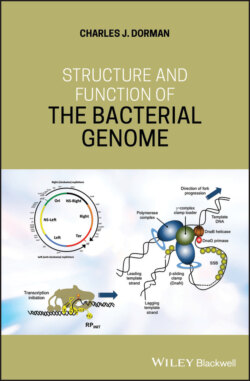Читать книгу Structure and Function of the Bacterial Genome - Charles J. Dorman - Страница 40
1.29 DNA Topoisomerases: DNA Topoisomerase IV
ОглавлениеTopo IV was discovered in E. coli 14 years after gyrase, its type II topoisomerase companion (Kato et al. 1990) (Table 1.1). It is encoded by two genes, parC and parE, whose names hint at a defect in chromosome partitioning that is associated with mutants with a topo IV deficiency (Kato et al. 1990). Topo IV is an ATP‐dependent topoisomerase but, unlike gyrase, which it closely resembles in amino acid sequence and subunit structure, it cannot introduce negative supercoils into DNA. Instead, Topo IV relaxes both positively and negatively supercoiled DNA and is an important DNA decatenase (Bates and Maxwell 2007; Crisona and Cozzarelli 2006; Kato et al. 1992; Peng and Marians 1993; Zawadzki et al. 2015). Its relationship with the MukBEF SMC‐like complex is emerging as one of Topo IV's most physiologically significant functions, one that is important for the correct spatiotemporal management of chromosome replication, architecture, and segregation during the cell cycle (Section 1.21).
